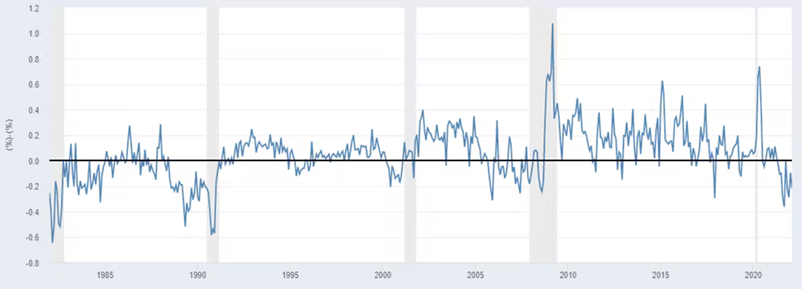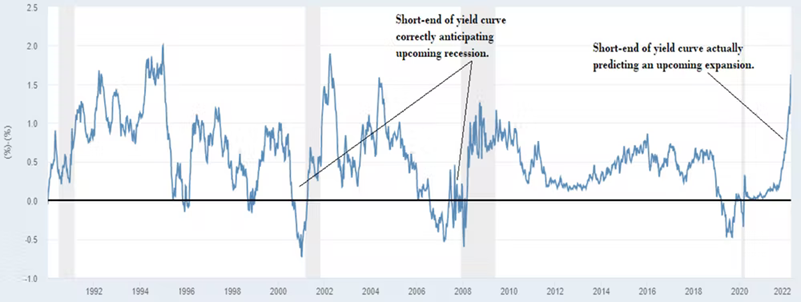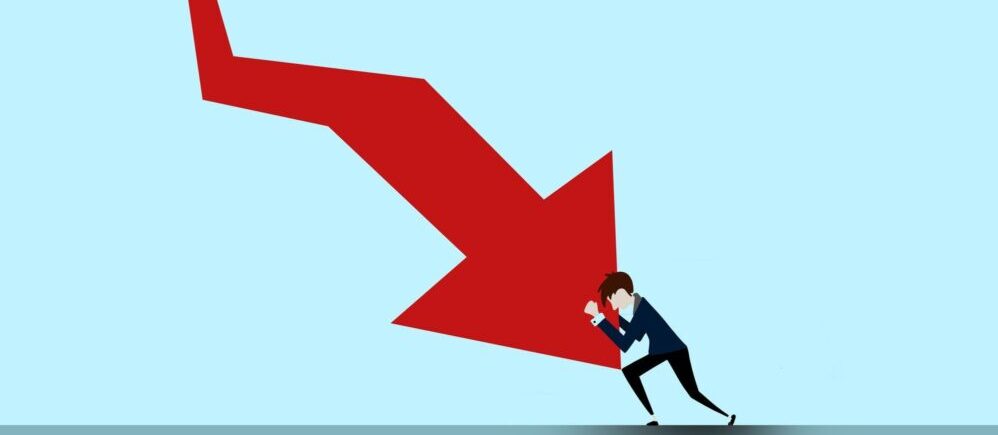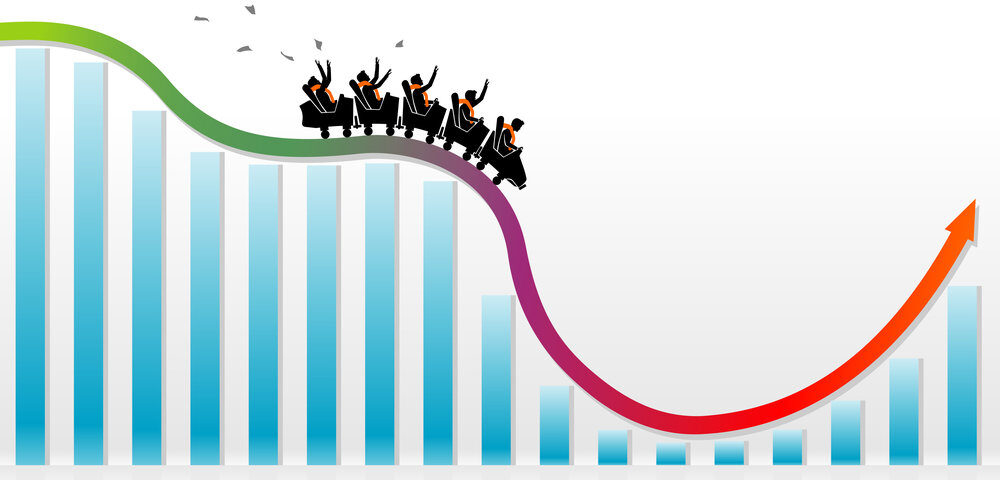What is an inverted yield curve? Does it mean we’re heading for a recession? One key predictor of downturns in the economy is what is known as the yield curve. This typically refers to the market for what the US government borrows by issuing bonds and other securities that mature over different time horizons ranging from weeks to 30 years.
Each of these securities has its yield (or interest rate), which moves up and down in inverse proportion to the security’s market value – so when bonds are trading at high prices, their yields will be low and vice versa. You can draw a chart that plots the yields of securities at each maturity date to see how they relate to one another, known as the yield curve.
In ordinary times, as compensation for higher risk, investors expect higher interest rates for money they lend over a longer time horizon. To reflect this, the yield curve generally slopes up. When it slopes down – in other words, inverts – it is a sign that investors are more pessimistic about the long term than the short term: they think a downturn or a recession is coming soon. The Federal Reserve is expected to cut short-term interest rates to stimulate a struggling economy instead of raising rates to cool down an overheating economy.
Most closely watched is the relationship between two-year and ten-year US treasury debt. The so-called spread between these two metrics is seen in the chart below, with the grey areas indicating recessions that have tended to follow shortly after.
Spread between two-year and ten-year treasuries

https://fred.stlouisfed.org/series/T10Y2Y
As you can see, the yields of these two securities are getting very close to being the same. The trend suggests that the two-year will soon have a higher yield – meaning the curve is inverting. The key question is, does an inverted yield curve hint at an upcoming downturn? Not necessarily. Let me explain why.
Inflation expectations
One complication is that bond yields don’t only reflect what investors think about future economic growth. They also buy or sell debt securities depending on what they think will happen to inflation. It’s assumed that prices will increasingly rise in the years ahead and investors will need to be compensated for bearing that risk since higher inflation will erode their future purchasing power. For this reason, bond yields contain an element of inflation premium, with an increasingly higher premium for bonds with longer maturity dates.
The following chart shows the spread between the inflation expectations built into 10-year and 2-year Treasuries. The fact that it is in negative territory suggests the market thinks that inflation may fall, and this may also explain why yields on longer-dated Treasuries are lower than on shorter-dated ones. Although inflation would fall during an economic slowdown or recession, there could be a situation where inflation fell but the economy remained buoyant. Hence a yield curve inversion doesn’t have to mean that we are up against an imminent recession.
Inflation expectations (ten-year vs two-year treasuries)

https://fred.stlouisfed.org/series/T10Y2Y
Quantitative easing
Another factor, potentially affecting the yield curve, is the Federal Reserve’s moves to buy government debt as part of its quantitative easing program (QE). The idea behind QE is that by purchasing long-term bonds, the Fed can keep long-term interest rates low, which decreases the rates on mortgages and other loans, thereby stimulating the economy. Conversely, when sold, lending rates will go up and economic activity will be reduced.
Earlier in March, the Fed started raising the benchmark US interest rate and stopped the asset purchases under the QE programme that it launched in 2020 in response to the COVID pandemic.
It also indicated that it would only start selling these assets after several months of hiking the benchmark rate. Since the benchmark rate is a short-term rate, the yield curve inverting might indicate market expectations that short-term interest rates will be higher than long-term ones for the foreseeable future.
Which yield curve should we consider?
It is also sometimes argued that two-year/ten-year spreads are not the most useful ones to watch and that instead one should focus on yields at the shorter end of the yield curve. In this set up, if you look at the difference in yields between two-year and three-month treasuries, it is steepening: in other words, it is hinting that economic growth is going to increase in the short term.
Economists sometimes argue that these near-term yield curve movements have stronger predictive power than those further out. At the very least, the fact that these are saying something different shows the need to be careful because different data about treasury yields can depict a different (or even opposite) picture depending on what time horizon you are considering.
Spread between two-year and three-month treasury yields

https://fred.stlouisfed.org/series/T10Y2Y
To summarise, it doesn’t necessarily follow that an inverted yield curve will be followed by a recession. It certainly could mean that, in which case, unemployment would likely rise, and inflation would potentially come down more quickly than many are expecting. But for now, it’s too early to say. The debt market is signaling that change is coming, though it’s often easier to say in hindsight what it meant than at the present time.











